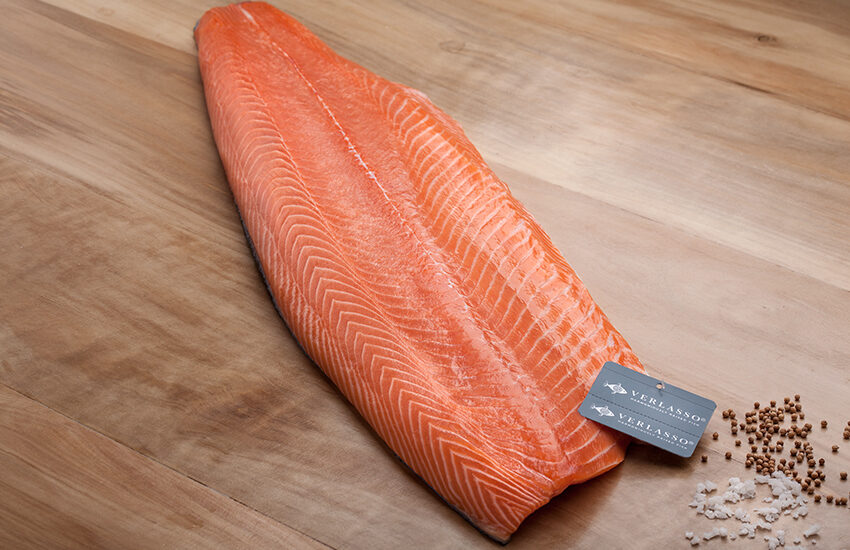Dose with Omega-3’s

Did you know that human beings evolved on a diet rich in omega-3 fats, such as wild fish and grass-fed animals? Today, due to our overwhelming reliance on processed food, we are consuming way fewer omega-3 fats and overdosing on omega-6 fats.
What are Omega-6s and Omega-3s … and why should you care?
Omega-3 and omega-6 fatty acids are considered essential fats because your body can’t make them. This means you must get them through food or supplementation.
Omega-3 fats have an anti-inflammatory effect in the body, while omega-6 fats tend to be pro-inflammatory.
When eaten in the form of nuts and seeds, omega-6 fats promote health. The problem is, omega-6 fatty acids are also found in cereal grains, like corn and wheat, and in refined vegetable oils, such as corn, safflower, canola, sunflower, cottonseed, and soybean oil. Whether a bag of chips or a box of “healthy” cereal, read the nutrition label on any processed food and you will likely see one or more of these inflammatory oils.
Research from The American Journal of Clinical Nutrition suggests that our hunter-gatherer ancestors consumed omega-6 and omega-3 fats in a ratio of roughly 1:1. It also indicates that both ancient and modern hunter-gatherers did not experience inflammatory diseases, like heart disease, cancer, and diabetes.
Ready for a real shocker?
Today, due to our standard American diet of processed convenience food, we consume a ratio closer to 20:1 (that’s 20 omega-6 fats to 1 omega-3 fat!).
Omega-3 rich foods
Luckily, omega-3 fats can be found in a wide-variety of foods. Plant-based sources include the following nuts, seeds, and nut/seed butters:
- Chia seeds
- Flax seeds
- Hemp seeds
- Walnuts
- Pecans
- Pistachios
- Sesame seeds
- Hazelnuts
- Pumpkin seeds
- Cashews
- Almonds
Animal sources of omega-3 fats:
- Cod
- Grass-fed beef
- Halibut
- Salmon
- Trout
- Tuna
Dairy and plant-based milk sources of omega-3 fats:
- Grass-fed butter/ghee
- Grass-fed milk
- Grass-fed yogurt
- Pasture-raised eggs
- Grass-fed cow, sheep, goat cheese
- Plant-based nut milk, yogurt and butter
- Plant-based and fermented cheese
A vote for grass-fed over grain-fed beef
Grass is rich in omega-3 fats. Unfortunately, humans aren’t able to digest grass—but lucky for us, cows can! Cows that graze on grass produce meat and milk rich in omega-3 fats in a form we can digest. This fact points to the following truth worth considering: you are what you eat…and also what the animal eats!
It’s important to note that the claim “Grass-fed” does not necessarily mean the cattle was fed exclusively grass. It’s very likely they were fed grain at some point in their life, and as you just learned, grains are rich in pro-inflammatory omega-6 fats.
On the other hand, the term “100% Grass-Fed & Finished” or “100% Grass-Fed” means the cattle was raised on pasture for their entire lifespan, and never finished on corn or grain byproduct.
Pre Beef is a line of fresh 100% grass-fed and grass-finished beef sold at Heinen’s. Check them out in the meat department today!
Omega-3 ideas
Here are a few simple ideas to help you dose with omega-3s:
Add:
- Ground flax seed to oatmeal or yogurt.
- Hemp seeds to hot veggies dishes.
- Pan-seared salmon to leafy green salads.
- A spoonful of Heinen’s fresh ground almond or walnut butter to apple slices for a delicious and satisfying snack!
Replace:
- Grain-fed beef with 100% grass-fed beef for meatballs, burgers and steaks. Check out this savory recipe for Easy Grass-fed Meatballs.
- Regular butter with grass-fed butter in recipes.
- Regular eggs with those labeled “pasture-raised”.
Food for thought …
Excessive amounts of omega-6 fatty acids—found in our modern, standard American diet—promote inflammatory conditions like cardiovascular disease, cancer, diabetes, and autoimmune diseases.
By gradually decreasing the amount of processed foods you eat and slowly adding nutrient-dense, omega-3-rich foods, you can turn this ratio around and enjoy lower levels of inflammation and better health.


